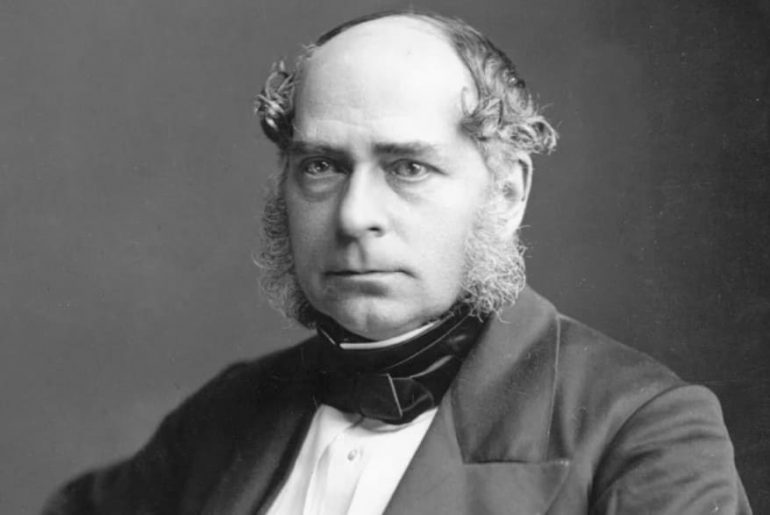Bessemer, Sir Henry (Charlton, Hertfordshire, 1813-London, 1898) British inventor, born in Charlton, Hertfordshire, and largely self-taught.
He was a prolific inventor, but is best known for his innovations in steelmaking which greatly increased the annual production of steel in England, making high-quality steel available at very low cost.
He also invented a method to reduce the graphite used in the manufacture of pens, a printing machine, another to polish diamonds, a solar furnace, bronze paints.
His motto: “The idea for a business should be concentrated in a single business in which a man embarks totally.”
Table of Contents
What did Henry Bessemer invent?
NEW ENGINEERING
The Bessemer converter made it possible to obtain cheap steel and, with it, the construction of amazing engineering works for the time.
FRAUD
At the age of 20, Bessemer designed a procedure that prevented forgeries of stamps printed on official documents that was adopted by the Casa del Timbre.
OTHER INVENTIONS:
He patented more than 117 inventions: among them, a device for obtaining typographical characters, a new type of projectile, brakes for railways, machines for the glass industry.
GOLD DUST
He designed a machine for the factory. tion of bronze powder intended for coating surfaces with gold effects, which invaded the market and was used throughout England for decoration.
FAILED ATTEMPT
He announced the details of the method. Iron and steel industrialists invested fortunes in blast furnaces to manufacture steel using the new system, but the product turned out to be of poor quality and Bessemer lost prestige and credibility.
RESTRICT SUCCESS
He went back to experiments to perfect his method. Since they no longer believed in him, he set up his own steel mills in Sheffield, England. He imported phosphorous-free ore from Sweden and sold high-quality steel at a much lower cost than his competitors.
The Bessemer process uses a Bessemer converter, a pear-shaped container that can rotate around an axis to facilitate loading and unloading, lined on the inside with refractory clay.
Once filled with molten iron, pressurized air is injected through openings, whose oxygen combines with carbon and other impurities, increasing the temperature of the mixture. Once all the carbon has been removed, soft iron is obtained. If you want to obtain steel, just add carbonated iron in known proportions.
Henry Bessemer had invented a new type of projectile which, by spinning in flight, gave artillery pieces greater range and hitherto unknown accuracy.
Napoleon III, the new emperor of France, showed interest in the invention and offered to finance further experiments.
Bessemer (who was English, though the son of a Frenchman) agreed, but warned that the new projectile would require barrels of a better material than the cast iron then known: a cast iron barrel would burst under the great explosive pressure required to shoot the new projectile.
Bessemer knew nothing about iron making, but he decided to learn it.
Thus it was that in 1854 an era ended and a new one began.
Henry Bessemer, who was born in England on January 19, 1813, already had a number of inventions to his credit; but next to the company he was about to attack they were mere trifles.
For more than two thousand years, man had used iron as the hardest and most resistant base metal he knew.
It was obtained by heating iron ore with coke and limestone.
The resulting product contained a large amount of carbon (from coke) and was called ‘cast iron’ or ‘cast iron’.
It was cheap and hard, but also brittle; a strong blow was enough to break it.
Carbon could be removed from molten iron by mixing it with more iron ore.
The oxygen in the ore combined with the carbon in the molten iron to form carbon monoxide gas, which bubbled up and burned.
Gone is the almost pure iron, coming from ore and cast iron: it is what was called “wrought iron” or “puddled iron”.
This form of iron was strong and could withstand heavy blows without breaking. But it was quite soft and also expensive.
In 1850 the production of steel in Brittany was approximately 50,000 tons. Of this total, 85% was produced in Sheffield. By 1880, steel production with the Bessemer system was over one million tons out of an approximate total country steel production of 1,300,000 tons.
However, there was another form of iron that was halfway between pig iron and wrought iron: steel.
Steel could be made stronger than pig iron and harder than wrought iron, thus combining the virtues of both.
Before Bessemer, you had to first convert pig iron into wrought iron and then add the necessary ingredients to make steel.
If wrought iron was already expensive, steel was twice as expensive.
Fairly rare metal, it was mainly used to make swords.
Bessemer’s task was to remove carbon from pig iron at moderate prices.
He thought that the cheapest and easiest way to add oxygen to molten iron to burn carbon was to use an air blast instead of adding iron ore.
But wouldn’t the air cool the molten iron and solidify it?
Bessemer began to experiment and soon showed that the jet of air served his purpose.
The air burned off the carbon and most other impurities, and the heat of combustion raised the temperature of the iron.
By controlling the jet of air, Bessemer was able to make steel at a much lower cost than previous methods.
In 1856 he announced the details of the method.
Iron and steel industrialists were enthusiastic and invested fortunes in “blast furnaces” to manufacture steel by the new system.
Imagine their horror when they discovered that the product was of poor quality; Bessemer, accused of having taken them for a ride, returned to the experiments.
It turned out that ore containing phosphorous could not be used in this method; the phosphorus remained in the final product and made the iron brittle.
And it had happened that Bessemer used phosphorus-free iron ore in his experiments.
He announced this discovery, but the industrialists were no longer listening: they were fed up with the Bessemer furnaces.
So he borrowed money and set up his own steel mills in Sheffield, England, in 1860.
He imported phosphorus-free ore from Sweden and began selling high-quality steel for $100 less a ton than any of his competitors.
That ended with all reluctance.
By 1870, methods were found to solve the phosphorus problem, making it possible to tap America’s vast iron ore resources.
Bessemer was ennobled in 1879 and died in London, rich and famous, in 1898.
Cheap steel made it possible to build engineering works that until then had not even been dreamed of.
The steel beams could now be used as skeletons to support anything imaginable.
Railroads began to span entire continents on steel rails, and large steel ships began to ply the oceans.
Suspension bridges spanned rivers, skyscrapers began their climb to heights, tractors were now stronger, and it didn’t take long for automobiles with steel frames to appear.
And in the world of war, more powerful cannons began to thunder, putting new, more resistant armor to the test.
Thus the Iron Age died and the Steel Age began.
Today aluminium, glass and plastic have imposed their law where lightness matters more than resistance.
But when what matters is this factor, we continue to live in the Age of Steel.
EXPANSION ON THE BESSEMER PROCESS
The Bessemer Method for Making Steel: In the production of steel, most of the pig iron that comes out of the blast furnaces is used.
The year of 1856 is possibly the most important in the history of steel. Previously, steel was made by cementation and crucible.
In both methods, the iron bars covered with powdered charcoal had to be placed inside airtight containers called crucibles.
These were introduced into a brick oven that generated a high temperature, which burned the impurities of the metal.
In addition, the heat caused the iron to absorb the carbon from the charcoal, thus becoming steel.
Since the production of steel by these methods was slow and expensive, many attempts were made to improve them.
In the mid-19th century, the Englishman Henry Bessemer and the American William Kelly discovered that it was possible to burn the impurities in pig iron by injecting pressurized air through the molten metal.
Both obtained patents for the method: Bessemer in 1856 and Kelly in 1857. The latter was unable to continue his research due to lack of money; but Bessemer, who had the necessary means, managed to do it.
He built a furnace that is known as the Bessemer converter, and obtained a patent in 1856.
Said converter consists of a pear-shaped incunabulum container made of steel plates, and lined on the inside with clay and refractory bricks.
It is provided with a double bottom, and has two compartments.
The lower one is an air chamber connected to a blower.
At the bottom of the upper container there are numerous perforations.
To load the converter, it is tilted, and then the molten pig iron is poured through the opening at the top.
The air is then released and passes through the mass of molten iron. Only when the air current reaches its maximum intensity, the converter is put back in the vertical position. Otherwise, the molten metal would plug the holes in the bottom, preventing air from entering the furnace.
When fully operational, it releases bright sparks, dense brown smoke, and deep red flames into the air.
After a few minutes, the flames grow larger and brighter, indicating that the carbon is burning.
After about 15 minutes, the flames quickly die down and all impurities are removed.
Then, the converter is tilted again and the air passage is closed.
This action must be done at the right time. If it proceeds prematurely, some impurities remain in the metal, and if, on the contrary, the operation is delayed, the metal burns, rendering it useless.
The necessary elements, such as carbon and manganese, are then added and the final product is obtained.
Although the Bessemer converter has been very successful, it has the serious disadvantage that it only works well with high grade, low phosphorus ore.
For this reason, it is currently only used to make a small part of total steel production.





